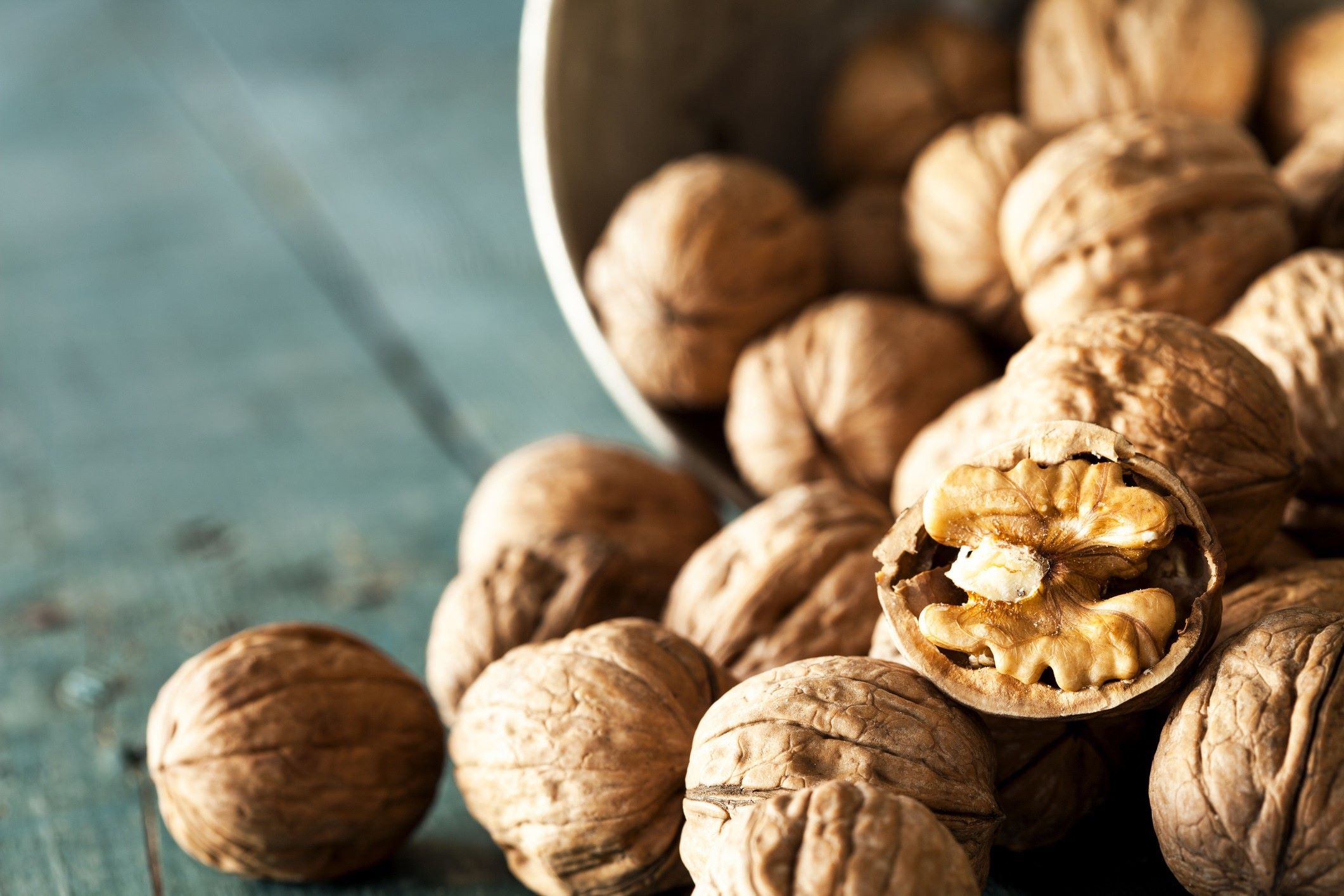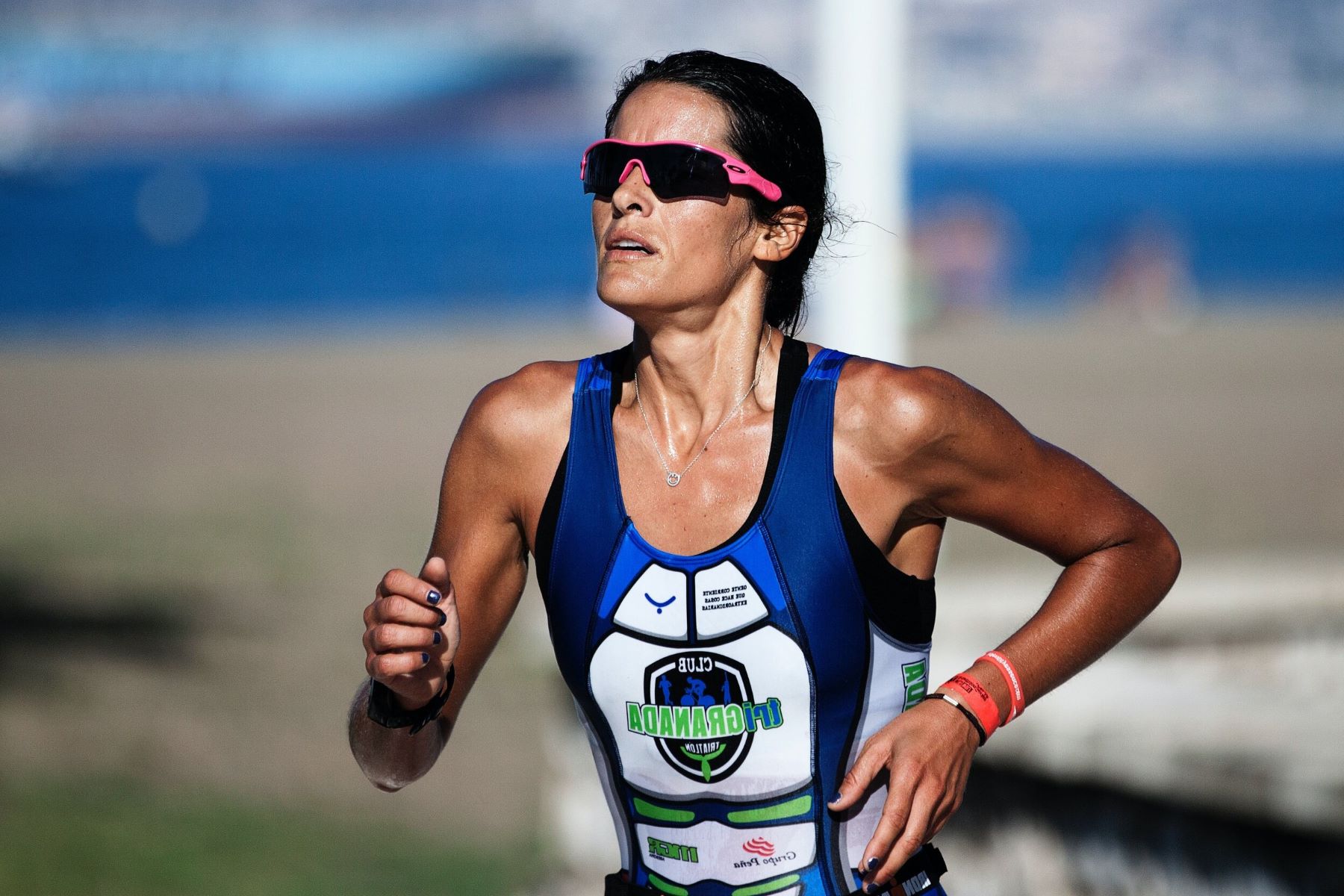Home>Health & Nutrition>Performance Age Is A More Accurate Indicator Of True Age


Health & Nutrition
Performance Age Is A More Accurate Indicator Of True Age
Published: February 23, 2024
Discover how performance age provides a more accurate reflection of true age. Explore the impact on health and nutrition. Unlock the key to aging well.
(Many of the links in this article redirect to a specific reviewed product. Your purchase of these products through affiliate links helps to generate commission for Therunningadvisor.com, at no extra cost. Learn more)
Table of Contents
Introduction
In the realm of health and fitness, the concept of age has traditionally been synonymous with chronological age – the number of years a person has lived since birth. However, this conventional measure fails to capture the full spectrum of an individual's physical capabilities and overall well-being. As a result, a growing body of evidence suggests that "performance age" may be a more accurate indicator of a person's true age.
Performance age takes into account various factors such as fitness level, muscle strength, flexibility, endurance, and cognitive function to provide a more comprehensive assessment of an individual's physical and mental vitality. Unlike chronological age, which remains fixed and immutable, performance age is dynamic and can be influenced by lifestyle choices, exercise habits, and overall health management.
By shifting the focus from the mere passage of time to an individual's functional capacity and overall vitality, the concept of performance age offers a more nuanced and personalized approach to understanding age-related changes. This paradigm shift has significant implications for how we perceive aging and the measures we take to maintain and improve our health and fitness as we grow older.
In this article, we will delve into the limitations of relying solely on chronological age as a measure of health and vitality, explore the concept of performance age, examine the factors that influence it, and highlight its importance in the context of health and fitness. Furthermore, we will provide insights into how performance age can be calculated, offering readers a practical understanding of this innovative approach to assessing age and well-being.
As we embark on this exploration of performance age, it becomes clear that this concept has the potential to revolutionize our understanding of aging, empowering individuals to take proactive steps towards optimizing their health and vitality at any stage of life.
The Limitations of Chronological Age
The conventional reliance on chronological age as the primary yardstick for assessing an individual's health and fitness status overlooks the multifaceted nature of aging. While chronological age provides a basic framework for categorizing individuals into age groups, it fails to capture the wide spectrum of physical, mental, and physiological variations that exist within each age bracket. This one-size-fits-all approach disregards the unique attributes and capabilities of each person, leading to a limited and often inaccurate representation of their overall well-being.
Furthermore, chronological age does not account for the significant diversity in lifestyle choices, genetic predispositions, and environmental influences that shape an individual's aging process. Two individuals of the same chronological age may exhibit vastly different levels of physical fitness, cognitive function, and overall vitality due to a myriad of factors that extend beyond the simple passage of time.
Moreover, the static nature of chronological age fails to reflect the dynamic and adaptable nature of the human body. It does not consider the impact of regular exercise, balanced nutrition, and proactive health management, all of which can significantly influence an individual's physical and mental capabilities as they age. By fixating solely on chronological age, the broader context of an individual's health and fitness journey is overlooked, leading to a narrow and often misleading assessment of their true age-related status.
In essence, the limitations of relying solely on chronological age as a measure of health and vitality underscore the need for a more comprehensive and personalized approach to understanding aging. This necessitates a shift towards embracing the concept of performance age, which takes into account an individual's functional capacity, fitness level, and overall well-being to provide a more accurate and meaningful assessment of their true age.
By acknowledging the constraints of chronological age and recognizing its inadequacy in capturing the diverse and dynamic nature of aging, we pave the way for a more holistic and individualized perspective on health and fitness. This sets the stage for a deeper exploration of performance age and its potential to redefine our understanding of age-related changes, empowering individuals to take proactive steps towards optimizing their health and vitality at any stage of life.
Understanding Performance Age
Understanding performance age involves a paradigm shift from the traditional reliance on chronological age to a more dynamic and personalized assessment of an individual's overall health and vitality. Unlike chronological age, which remains fixed and unalterable, performance age takes into account a range of factors that collectively contribute to an individual's functional capacity and well-being. It encompasses an individual's physical fitness, muscle strength, flexibility, endurance, cognitive function, and overall health status to provide a more comprehensive and accurate representation of their true age-related status.
At its core, performance age reflects an individual's physiological and psychological capabilities, offering insights into their functional age rather than simply the number of years they have lived. This approach recognizes that age-related changes extend beyond mere numerical milestones, encompassing the intricate interplay of genetic predispositions, lifestyle choices, and environmental influences that collectively shape an individual's aging trajectory. By embracing the concept of performance age, individuals can gain a deeper understanding of their physical and mental vitality, allowing for a more personalized and proactive approach to managing their health and fitness as they age.
Moreover, performance age acknowledges the dynamic nature of the human body, emphasizing that age-related changes are not predetermined or immutable. Instead, they are influenced by a myriad of factors, including exercise habits, nutritional choices, stress management, and overall health practices. This perspective empowers individuals to recognize that their age-related status is not solely defined by the passage of time but is intricately linked to their lifestyle and health behaviors. By understanding performance age, individuals can gain valuable insights into their current state of well-being and identify opportunities for improvement, thereby fostering a proactive and empowered approach to aging.
In essence, understanding performance age transcends the limitations of chronological age, offering a more nuanced and individualized perspective on aging. It reframes the conversation around age-related changes, emphasizing that age is not merely a number but a reflection of an individual's overall physical and mental capabilities. By embracing the concept of performance age, individuals can gain a deeper appreciation of their unique aging journey, empowering them to make informed decisions that optimize their health and vitality at every stage of life.
Factors Affecting Performance Age
The concept of performance age is influenced by a myriad of factors that collectively shape an individual's functional capacity, physical fitness, and overall well-being. These factors encompass a diverse range of physiological, lifestyle, and environmental elements that play a pivotal role in determining an individual's performance age. By understanding the key influencers of performance age, individuals can gain valuable insights into the determinants of their age-related status and identify opportunities for enhancing their health and vitality.
Physical Fitness and Exercise Habits
Physical fitness stands as a cornerstone of performance age, directly impacting an individual's functional capacity and overall well-being. Regular exercise and physical activity play a crucial role in maintaining muscle strength, cardiovascular health, flexibility, and endurance, all of which contribute to a more youthful and vibrant performance age. Engaging in a well-rounded exercise regimen that incorporates cardiovascular workouts, strength training, and flexibility exercises can significantly enhance an individual's physical fitness and positively influence their performance age.
Read more: Achieve Age-Group Athlete Status In Britain
Nutritional Choices and Dietary Habits
Nutrition serves as a fundamental determinant of performance age, with dietary choices exerting a profound impact on an individual's overall health and vitality. A balanced and nutrient-rich diet supports optimal physiological function, promotes muscle health, and bolsters cognitive well-being, all of which are integral to a youthful performance age. Embracing a diet rich in fruits, vegetables, lean proteins, and healthy fats while minimizing the consumption of processed foods and sugary beverages can contribute to a more vibrant and resilient performance age.
Stress Management and Mental Well-being
The management of stress and the preservation of mental well-being are critical factors in determining an individual's performance age. Chronic stress can accelerate the aging process, compromise cognitive function, and undermine overall vitality, thereby contributing to an advanced performance age. Implementing stress-reducing practices such as mindfulness meditation, yoga, and adequate sleep can mitigate the detrimental effects of stress, promoting a more youthful and resilient performance age.
Health Practices and Preventive Care
Proactive health management and preventive care play a pivotal role in shaping an individual's performance age. Regular health screenings, vaccinations, and adherence to recommended health guidelines contribute to the maintenance of optimal physiological function and overall well-being, thereby supporting a more youthful performance age. By prioritizing preventive care and adopting proactive health practices, individuals can mitigate age-related health risks and maintain a vibrant and resilient performance age.
Environmental Influences and Lifestyle Choices
Environmental factors and lifestyle choices exert a profound influence on an individual's performance age. Exposure to environmental pollutants, tobacco smoke, and other toxins can accelerate the aging process and compromise overall health, contributing to an advanced performance age. Conversely, adopting a health-conscious lifestyle that prioritizes clean air, regular physical activity, and a supportive social network can positively impact an individual's performance age, fostering a more youthful and vibrant state of well-being.
In essence, the factors affecting performance age encompass a multifaceted interplay of physical, nutritional, psychological, and environmental elements that collectively shape an individual's age-related status. By recognizing the influence of these factors, individuals can gain valuable insights into their performance age and leverage this understanding to make informed decisions that optimize their health and vitality, thereby fostering a proactive and empowered approach to aging.
The Importance of Performance Age in Health and Fitness
The concept of performance age holds profound significance in the realm of health and fitness, offering a transformative perspective on aging that transcends the limitations of chronological age. By shifting the focus from the mere passage of time to an individual's functional capacity and overall vitality, performance age serves as a powerful tool for assessing and optimizing health and fitness across all stages of life.
One of the key aspects of performance age lies in its ability to provide a more accurate and personalized assessment of an individual's age-related status. Unlike chronological age, which offers a static and generalized representation of age, performance age takes into account an individual's physical fitness, muscle strength, flexibility, endurance, cognitive function, and overall health status. This comprehensive approach offers valuable insights into an individual's true age-related capabilities, allowing for a more nuanced understanding of their overall well-being.
Moreover, the importance of performance age in health and fitness extends to its role in fostering a proactive and empowered approach to aging. By embracing the concept of performance age, individuals are empowered to take ownership of their health and vitality, recognizing that age-related changes are not predetermined or immutable. Instead, they are influenced by lifestyle choices, exercise habits, and overall health management. This understanding encourages individuals to adopt a proactive stance towards optimizing their performance age, thereby promoting a more vibrant and resilient state of well-being.
Furthermore, performance age serves as a vital metric for guiding personalized health and fitness interventions. By assessing an individual's performance age, health and fitness professionals can tailor targeted strategies to enhance physical fitness, cognitive function, and overall vitality. This personalized approach enables individuals to address specific areas of improvement, optimize their health practices, and embark on a journey towards a more youthful and vibrant performance age.
In the context of fitness and exercise, performance age offers a compelling framework for setting realistic and meaningful goals. By aligning fitness aspirations with performance age benchmarks, individuals can strive towards enhancing their functional capacity, muscle strength, endurance, and overall physical fitness. This approach fosters a sense of purpose and motivation, guiding individuals towards sustainable and impactful fitness endeavors that are aligned with their true age-related capabilities.
In essence, the importance of performance age in health and fitness lies in its capacity to revolutionize our understanding of aging, empowering individuals to embrace a more personalized and proactive approach to optimizing their health and vitality. By recognizing the dynamic nature of performance age and its implications for overall well-being, individuals can embark on a transformative journey towards a more vibrant and resilient state of health and fitness, irrespective of their chronological age.
How to Calculate Performance Age
Calculating performance age involves a multifaceted assessment of an individual's physical fitness, cognitive function, and overall well-being to derive a comprehensive representation of their age-related status. Unlike the straightforward determination of chronological age, which is based solely on the number of years lived, the calculation of performance age integrates a range of factors to provide a more nuanced and personalized understanding of an individual's true age-related capabilities.
Comprehensive Fitness Assessment
A fundamental aspect of calculating performance age entails a comprehensive fitness assessment that evaluates an individual's physical capabilities across various domains. This assessment encompasses measurements of cardiovascular fitness, muscular strength, flexibility, and endurance, providing valuable insights into an individual's functional capacity and overall physical fitness. By quantifying these key fitness parameters, a more accurate representation of an individual's performance age can be derived, taking into account their physical prowess and vitality.
Cognitive Function Evaluation
In addition to physical fitness, the calculation of performance age incorporates an evaluation of cognitive function. Assessing cognitive abilities such as memory, processing speed, and executive function offers a holistic perspective on an individual's mental vitality and age-related cognitive capabilities. By integrating cognitive function assessment into the calculation of performance age, a more comprehensive understanding of an individual's overall age-related status is achieved, encompassing both physical and mental well-being.
Health and Lifestyle Factors
Furthermore, the calculation of performance age considers an individual's health practices, lifestyle choices, and overall well-being. Factors such as nutrition, stress management, preventive care, and environmental influences play a pivotal role in shaping an individual's age-related status. By accounting for these health and lifestyle elements, the calculation of performance age offers a more holistic and personalized assessment, recognizing the diverse influences that contribute to an individual's overall health and vitality.
Data Integration and Analysis
The process of calculating performance age involves the integration and analysis of data gathered from comprehensive fitness assessments, cognitive function evaluations, and health and lifestyle factors. This data-driven approach allows for a systematic and objective determination of an individual's performance age, leveraging quantitative and qualitative metrics to derive a holistic representation of their age-related capabilities. By synthesizing diverse sources of information, the calculation of performance age yields a robust and insightful assessment that transcends the limitations of chronological age.
Personalized Interpretation and Guidance
Upon calculating performance age, individuals are provided with a personalized interpretation of their age-related status, offering valuable insights into their physical fitness, cognitive function, and overall well-being. This personalized guidance empowers individuals to understand their true age-related capabilities and identify opportunities for improvement, fostering a proactive and informed approach to optimizing their health and vitality. By leveraging the calculated performance age, individuals can embark on a transformative journey towards a more vibrant and resilient state of well-being, irrespective of their chronological age.
In essence, the calculation of performance age represents a dynamic and comprehensive approach to assessing age-related status, offering individuals a personalized and insightful understanding of their physical and mental vitality. By integrating diverse assessments and data-driven analysis, the calculation of performance age transcends the limitations of chronological age, empowering individuals to embrace a more proactive and informed approach to optimizing their health and fitness across all stages of life.
Conclusion
In conclusion, the concept of performance age represents a paradigm shift in our understanding of aging, offering a dynamic and personalized approach to assessing an individual's true age-related capabilities. By transcending the limitations of chronological age and embracing a more comprehensive assessment of physical fitness, cognitive function, and overall well-being, performance age provides valuable insights into an individual's age-related status. This transformative perspective holds profound significance in the realm of health and fitness, empowering individuals to take proactive steps towards optimizing their health and vitality at any stage of life.
The limitations of relying solely on chronological age as a measure of health and vitality have been underscored, highlighting the need for a more nuanced and individualized approach to understanding aging. Performance age addresses this need by recognizing the multifaceted nature of age-related changes and offering a more accurate representation of an individual's true age. By considering factors such as physical fitness, cognitive function, lifestyle choices, and environmental influences, performance age provides a holistic assessment that reflects the dynamic and adaptable nature of the human body.
Moreover, the importance of performance age in health and fitness lies in its capacity to foster a proactive and empowered approach to aging. By acknowledging that age-related changes are influenced by lifestyle choices, exercise habits, and overall health management, individuals are empowered to take ownership of their health and vitality. This paradigm shift encourages individuals to embrace a more personalized and informed approach to optimizing their performance age, thereby promoting a more vibrant and resilient state of well-being.
The calculation of performance age involves a comprehensive assessment of physical fitness, cognitive function, and health and lifestyle factors, yielding a personalized and insightful understanding of an individual's age-related status. By integrating diverse assessments and data-driven analysis, the calculation of performance age transcends the limitations of chronological age, empowering individuals to embark on a transformative journey towards a more vibrant and resilient state of health and fitness, irrespective of their chronological age.
In essence, the concept of performance age has the potential to revolutionize our understanding of aging, offering individuals a more accurate and meaningful assessment of their true age-related capabilities. By embracing this transformative perspective, individuals can embark on a proactive and informed journey towards optimizing their health and vitality, fostering a more vibrant and resilient state of well-being at every stage of life.













